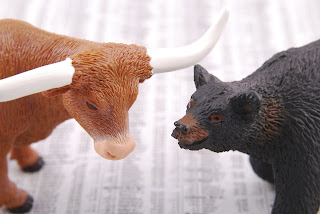Bull market and bear market
Introduction
The philosophy of herd behavior has been around since the beginning of time. As we currently live in a wild and unpredictable world with intense competition for profits, profit maximization is the best strategy for growth.
Profits can be derived from many avenues, both from the stock market, bonds and commodities. However, the most lucrative form of investment is the stock market. That being said, if you still believe that today’s stock market can be bought at a price of either $30,000 or $5,000 based on short term movements, are you aware of what the long term stock market can bear?
Since time immemorial, there have been bull market and bear market cycles. Bull markets are characterized by rich earnings growth while bear markets are characterized by periods of steep sell-offs. This means the market can swing either way for very long periods of time. Unfortunately, a bull market must fall by 100% first to become a bear market.
I’m going to take a look at where the three longest-performing bull markets in history have been, their timing and why they chose to be a bull market before proceeding to explore the three most longest bear markets in history. This way, hopefully, our readers get a full picture of the bull market and bear market cycle and they’ll be better informed on the current state of affairs with respect to the three most illustrious bull and bear markets.
3 Most Largest-Ever Bull Markets:
1. The Continuous US Boom That Led to the Great Depression
If the capitalist markets, as was shown in some truly incredible annualized returns, had been idle for a lengthy time, people would eventually get used to trying to obtain more relative returns. Despite the fact that most successful investors specialize in stocks, they have caught on to these changes in time frame and they look ahead several years. Therefore, during the early stages of the Financial Crisis of 1987, the market experienced perhaps the largest bull market in history at the time (going on 6 years from the initial peak), then it slumped and there was nothing to talk about for several years.
2. The Australian Highland Bear Market in 2013
Also between 2012 and 2013, the Australian Highland bear market became the longest ever in Australian history. This week it hit the number 1 spot and surpassed the 388-day mark set by the 2013 bear market.
There are two things that constitute a bear market. First is an overall significant decline over a defined period of time and second is a decrease in the business activity.
3. The Great Crash of 1837 and the Great Crash of 1929
As shown by the data from Etrade.com, during the Great Crash of 1837 and the Great Crash of 1929 (the Great Crash of 1929 is the most epic of the three as it is still being tested), investor sentiment with respect to stock market prices was hard to watch. In 1837, investors worldwide had built speculators who stood united in their bearish financial outlook until they raided the market and sent the Dow Jones to 50.
Over the last ~100 years, analysts have come up with strategies for spotting when a bear market is about to start. One of them that has thrived over many bull and bear markets is called positive divergence. Negative divergence refers to different stocks moving in opposite directions after closing bell. For example, last week, the S&P500 Index closed at around 3000 and at 10AM CST, the earnings news for Coca-Cola, Exxon Mobil and Verizon dropped in and from the closing bell and those stocks were sold very quickly. Positive divergence translates to an excess of capital in the market and the question is why so many stocks moved in a conflicting direction. Investors look for when the majority of stocks lead the market to a new high and if no direction emerges, then they see that it’s a bear market when the market closes below its next low (the low preceding the initial bottom). Analysts say the success of negative divergence isn’t guaranteed but it can be practiced with enough data.
Coincidentally, as far as income crosses these market short-term streaks with respect to stock prices, our Emerging America model portfolio includes virtually no-longer-earning stocks such as Microsoft and Pepsi, but the stability of the SP100 as well as stability of Main Street America through our Main Street Portfolio, our Emerging America Model Portfolio and Main Street ETF. Clearly, the managers are investing to achieve results in the long term with a long-term outlook.

